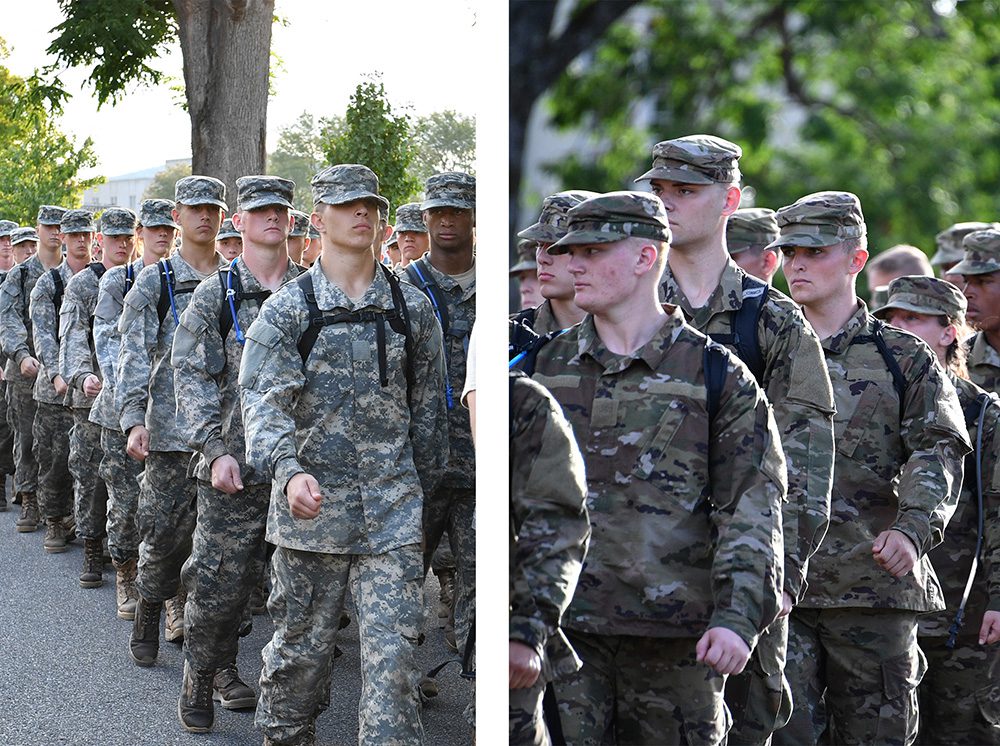Operational Camouflage Pattern Uniforms Replace ACUs

Rats march up Letcher Avenue after Rat Crucible in 2018, left, wearing ACUs, and in 2019, right, wearing OCPs. VMI composite by Kelly Nye and H. Lockwood McLaughlin.

Rats march up Letcher Avenue after Rat Crucible in 2018, left, wearing ACUs, and in 2019, right, wearing OCPs. VMI composite by Kelly Nye and H. Lockwood McLaughlin.
Sharp observers of cadets engaged in field activities this academic year will notice a change: New combat uniforms.
Over the late spring and summer, VMI Auxiliary Services obtained operational camouflage pattern uniforms to replace the Army combat uniform that cadets had worn for approximately the past 10 years. The change was made to keep cadet uniforms in line with those worn by personnel in the U.S. Army.
“[The Army] fielded this pattern about 2012 for units going to Afghanistan,” explained Lt. Col. Lee Clark III ’93, assistant director of auxiliary services. “After some more testing, they decided to field it to the entire Army.”
Camouflage is, of course, meant to help the wearer blend in with his or her surroundings. Clark explained that the OCP uniforms do that job better than the ACUs did. The new uniforms are a darker green with more brown patches than their predecessors, which had a grayish hue.
“It’s a bit more of a useful pattern, particularly in woodland or jungle areas,” Clark stated.
Funding for the new uniforms, in the amount of $1.4 million, was allocated by the General Assembly last year – an amount of money that covered two sets of OCPs for all cadets plus faculty and staff who use them, in addition to T-shirts, boots, belts and hats.
There’s also a new item of clothing, to be used when the weather is decidedly unpleasant. “Working with the commandant’s staff, we got a [water resistant and breathable] jacket and a fleece liner, so now the cadets have an option for cold or wet weather or both – kind of a field uniform,” noted Clark. “It gives the commandant some flexibility when it starts to snow or we get a lot of rain.”
But getting the funding for the uniforms was just a first step. The second step was finding a vendor who could supply them in sufficient quantities and work within the state procurement system. Luckily, VMI was able to take advantage of a uniform contract that Virginia Tech already had in place for its cadets. Alexandria, Virginia-based Full Metal Jacket thus became VMI’s OCP supplier.
Luckily, the owner of Full Metal Jacket could also help VMI out with another problem: What to do with the ACUs that cadets no longer needed.
“The price that he gave us for the surplus we applied to buy more uniforms,” explained Clark. “We spent a lot of time trying to maximize what we could get for the money we had.”
Notifications